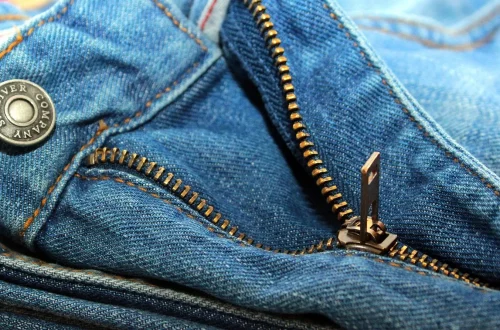
The Ultimate Guide to Clothing Colors for Men
Clothing colors play a pivotal role in men’s fashion, influencing not only personal style but also how others perceive an individual. The palette chosen can convey messages of professionalism, creativity, or even approachability. For many men, understanding the psychological effects of colors and how they impact first impressions can be a game changer in both social and professional settings.
Moreover, color selection in clothing isn’t merely about aesthetics; it can also reflect personality traits and lifestyle choices. A well-curated wardrobe that features a mix of colors can enhance confidence and express individuality. As trends evolve, the significance of color in clothing remains constant, making it essential for men to grasp the basics of color theory and application. From the timeless appeal of neutrals to the striking nature of bold hues, the choices are vast.
By cultivating an awareness of how colors interact with skin tones, occasions, and personal style, men can elevate their wardrobe and make informed decisions that resonate with their identity. This understanding is not just about following fashion rules but about crafting a personal brand that stands out in a crowd.
Understanding the Psychology of Colors
The psychological impact of colors is profound and often subconscious. Each color elicits specific emotional responses, influencing how one is perceived by others. For instance, blue is commonly associated with trust and reliability, making it a popular choice for business attire. It evokes calmness and can instill a sense of security in both the wearer and the observer.
Conversely, red is a color that demands attention. It symbolizes passion, energy, and action. Wearing red can convey confidence and assertiveness, making it a great choice for social events or occasions where one wants to stand out. However, it’s essential to use red thoughtfully, as too much can be overwhelming.
Green, often tied to nature, represents growth and renewal. It can convey a sense of calm and balance, making it suitable for casual outings. Wearing green may help project a relaxed yet confident vibe, ideal for informal gatherings.
On the other hand, black, a staple in many wardrobes, conveys sophistication, power, and elegance. It’s versatile and can easily transition from day to night. However, it can also come off as intimidating if not paired thoughtfully.
Understanding these associations can help men make conscious choices about their clothing colors based on the context and the message they wish to communicate. By strategically selecting colors that align with their goals or the impression they wish to leave, men can enhance their overall presence.
Building a Versatile Color Palette
A well-rounded wardrobe consists of a balanced mix of colors that can be easily interchanged. Building a versatile color palette is essential for any man looking to maximize his clothing options without overwhelming his closet.
Start with a base of neutral colors. Shades like navy, gray, beige, and white serve as foundational elements that can be paired with a variety of bolder hues. Neutrals offer flexibility and can be dressed up or down, making them suitable for both professional and casual settings.
Once the neutral foundation is established, incorporate a selection of accent colors that resonate with personal style. This could include seasonal colors, such as deep burgundy for fall or soft pastels for spring. These colors can add vibrancy and character to an outfit without overwhelming the overall look.
Additionally, consider the interplay of patterns and textures. Subtle patterns can introduce color without being too bold, while textured fabrics can add depth to an outfit. When mixing colors, the key is to maintain balance. Pairing a striking color with a neutral can create a harmonious look that is visually appealing.
Moreover, it’s essential to take personal skin tone into account when building a color palette. Certain shades can enhance natural features, while others may not be as flattering. Experimenting with different colors can help identify which ones complement an individual’s complexion best.
Ultimately, a thoughtful color palette can simplify the process of getting dressed, ensuring that each outfit feels intentional and stylish.
Understanding Seasonal Color Trends
Colors in fashion are often influenced by seasonal trends, which can vary year to year. Understanding these trends can help men stay fashionable while still adhering to their personal style.
In spring and summer, lighter colors tend to take center stage. Soft pastels, bright whites, and light blues are often favored during these warmer months. These colors not only reflect the lighter, breezier vibe of spring and summer but also help keep the wearer cool.
Fall and winter bring a shift toward deeper, richer hues. Colors like burnt orange, deep green, and rich burgundy become more popular as they align with the changing landscape. These colors evoke a sense of warmth and comfort, perfect for the chilly weather.
However, it’s crucial to remember that while seasonal trends can inspire wardrobe choices, they should not dictate them entirely. Personal style should always take precedence. Men can incorporate seasonal colors into their wardrobes without completely overhauling their existing clothing.
Accessories are a great way to introduce seasonal colors without committing to larger clothing items. A scarf in a trendy shade or a pair of shoes can freshen up an outfit without overwhelming the overall style.
Ultimately, understanding seasonal color trends allows men to remain fashionable while still expressing their unique style. It’s about finding a balance between following trends and staying true to oneself.
Creating a Signature Style with Color
Developing a signature style is about more than just color; it’s about how one uses color to express individuality. A signature style is a reflection of personality and can be achieved through thoughtful color choices.
To create a signature style, start by identifying which colors resonate most personally. This could be based on personal preference, skin tone, or even the emotions certain colors evoke. Once these colors are identified, incorporate them consistently into outfits. This could mean having a go-to jacket in a favorite color or regularly wearing shirts in shades that complement one’s skin tone.
Mixing and matching colors in a way that feels authentic can help solidify a personal style. Don’t shy away from experimenting with combinations that may initially seem unconventional. Fashion is about self-expression, and finding what works best often involves trial and error.
Accessories can play a crucial role in solidifying a signature style as well. A unique watch, a bold tie, or a distinct pair of shoes can enhance an outfit and reinforce personal color preferences.
Ultimately, the goal of creating a signature style is to feel confident and comfortable in one’s skin. Color is a powerful tool in achieving this, and by thoughtfully choosing how and when to use it, men can cultivate a style that is uniquely theirs.
In conclusion, understanding clothing colors can significantly impact how men express themselves and are perceived by others. By considering the psychology of colors, building a versatile palette, keeping up with seasonal trends, and developing a signature style, men can enhance their wardrobe and make more informed fashion choices.




